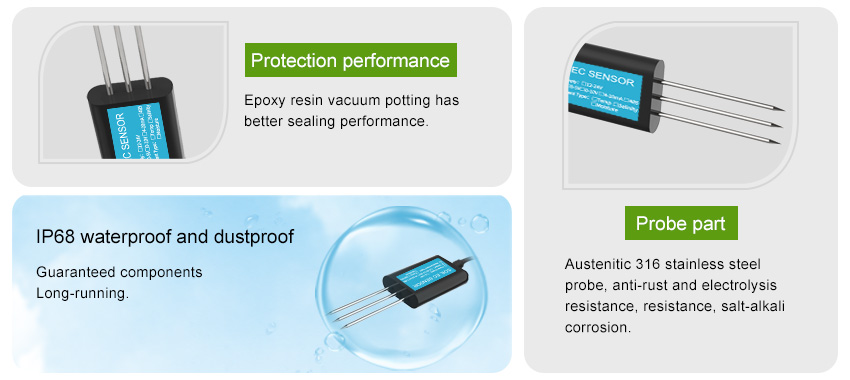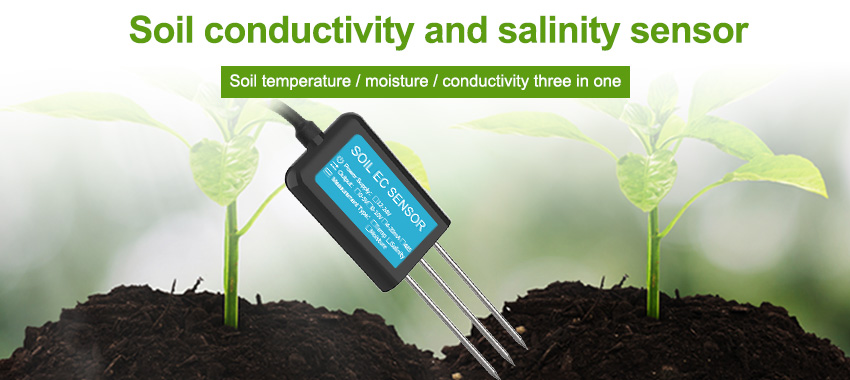Precision agriculture has revolutionized the way we approach farming by leveraging advanced technologies to optimize crop production and minimize environmental impact. Soil sensors play a crucial role in this agricultural transformation, providing real-time data and insights into soil health and nutrient levels. With the ability to monitor soil conditions with high precision and accuracy, these sensors empower farmers to make informed decisions, enhance resource efficiency, and maximize yields. This article explores the key benefits of soil sensors in precision agriculture and their potential to revolutionize farming practices.

Benefits of Soil Sensors in Precision Agriculture:
Real-time Monitoring of Soil Health:
Soil sensors allow farmers to monitor critical soil parameters in real-time, such as moisture content, temperature, pH levels, and nutrient concentrations. By continuously collecting data, farmers gain comprehensive insights into soil conditions and can make timely adjustments to irrigation, fertilizer application, and other management practices. Real-time monitoring enables proactive decision-making, preventing issues such as overwatering or nutrient deficiencies, which can impact crop health and productivity. With soil sensors, farmers can ensure that their crops receive the right amount of nutrients and water at the right time, optimizing yield potential.
Enhanced Nutrient Management:
Understanding soil nutrient levels is vital for efficient fertilizer management. Soil sensors provide accurate measurements of nutrient concentrations, allowing farmers to tailor their fertilization strategies accordingly. By knowing the exact nutrient requirements of a particular field, farmers can avoid under or over-fertilization, reducing the risk of nutrient runoff into water bodies and minimizing environmental pollution. Precise nutrient management not only saves costs but also promotes sustainable farming practices, preserving soil health and protecting water resources.
Prevention of Soil Erosion:
Soil erosion is a significant concern in agriculture, leading to the loss of fertile topsoil and reduced crop productivity. Soil sensors aid in assessing soil moisture levels, enabling farmers to implement erosion control measures effectively. By continuously monitoring soil moisture, farmers can schedule irrigation practices to maintain optimal soil moisture levels and prevent excessive runoff or erosion. This proactive approach helps preserve the integrity of the soil structure, reducing erosion risks and ensuring long-term sustainability.
Data-driven Decision-making:
Soil sensors gather a wealth of data that can be analyzed and used to make data-driven decisions. Farmers can integrate sensor data with other agricultural data, such as weather forecasts and crop growth models, to gain comprehensive insights into crop health and optimize management practices. By harnessing the power of big data analytics and machine learning algorithms, farmers can identify trends, patterns, and correlations in the data, enabling them to make informed decisions about planting schedules, irrigation regimes, pest management strategies, and more. Data-driven decision-making enhances productivity, minimizes risk, and improves overall farm efficiency.
Targeted Soil Sampling:
Traditional soil sampling methods are time-consuming and often provide limited spatial coverage. Soil sensors, on the other hand, offer the advantage of targeted soil sampling. Farmers can strategically place multiple sensors across their fields, capturing localized variations in soil conditions. This targeted approach enhances precision and allows farmers to identify areas with specific nutrient deficiencies or soil health issues that require immediate attention. By precisely targeting fertilizer application and soil amendments, farmers can optimize resource utilization, reduce costs, and minimize environmental impact.
Remote Monitoring and Automation:
Advancements in wireless sensor networks enable remote monitoring of soil conditions. Farmers can access real-time sensor data remotely through mobile applications or web-based platforms. This remote monitoring capability provides convenience, allowing farmers to monitor their fields from anywhere at any time. Additionally, automation systems can be integrated with soil sensors to automate irrigation and fertilization processes based on pre-set thresholds. This automation minimizes human error, optimizes resource utilization, and maximizes efficiency.

Future Perspectives:
Soil sensors are poised to play an increasingly vital role in precision agriculture as technology continues to advance. Integration with other smart farming technologies, such as drones, satellites, and robotic systems, holds immense potential for optimizing farm operations further. The combination of soil sensors with advanced data analytics and artificial intelligence will enable predictive modeling, allowing farmers to anticipate and pr
